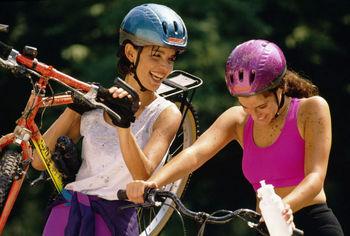Heat Illness Prevention
Warm and sunny weather provides an excellent opportunity for outdoor activities. However, care must be taken
The following guidelines can be used to decrease the risk of heat illness:
Allow your body time to “acclimatize”. Those planning on exercising in hot and humid weather need to gradually get accustomed to this environmental stress. Exercise should be done at decreased intensity for at least a week, as the body becomes acclimatized to the heat. Exercise intensity can then be increased gradually.
Replace fluids frequently. Water intake should be carefully monitored and encouraged for those exercising in the heat. Unlimited access to cold water should be available at all times. Fluid consumption should occur before, during, and after activity. During exercise, frequent water breaks should be planned. Water is usually the best choice for fluid replacement. Try to avoid drinks with caffeine or alcohol.
Monitor weight loss. Body weight should be checked before and after each exercise session on hot and humid days. Most of the body weight lost during exercise in the heat is water weight. It should be replaced the next day through proper diet and fluid replacement. A loss of 3-5% of body weight can reduce blood volume and lead to a health threat.
Wear cool clothing. Lightweight, loose-fitting, light colored clothing should be worn while exercising in the heat. Shorts and short-sleeved shirts should be worn. Avoid exercising in heat producing garments (sweatshirts, rubber suits, etc).
Monitor temperature and humidity. Environmental temperature and humidity (heat index) should be checked often during exercise sessions or sporting events. If the heat index reaches dangerous levels, activities should be modified. Try moving activities to early morning or late evening when the temperature and humidity are lower.
Recognize the symptoms of heat illness. Because heat illness can lead to permanent disability and, sometimes, death, recognizing symptoms early is critical to preventing these serious health effects. Any incident of heat-related illness should be referred to a physician immediately.
Early symptoms of heat illness include:
Later symptoms of heat exhaustion include:
Symptoms of heatstroke include:
- Fever (temperature above 104 °F)
- Irrational behavior
- Extreme confusion
- Dry, hot, and red skin
- Rapid, shallow breathing
- Rapid, weak pulse
- Seizures
- Unconsciousness
Know what to do. If you suspect someone is suffering from a heat-related illness, take these steps :
1. Have the person lie down in a cool place with their feet raised about 12 inches.
2. To lower their body temperature, apply cool, wet cloths or cool water to the person’s skin. Place cold compresses on the person’s neck, groin, and armpits. You can also use a fan.
3. If the person is alert, have them sip 1/2 cup liquid every 15 minutes. Gatorade or a salted drink made by adding a teaspoon of salt to a quart of water are good choices. Offer cool water if salt beverages are not available.
4. For muscle cramps, give beverages as above and gently but firmly massage the muscles.
4. Call 911 and give first aid as needed if the person:
- shows signs of shock
- develops bluish lips and fingernails
- has decreased alertness
- starts having seizures, or
- loses consciousness.
Reference:
Heat Emergencies ADAM)
For more information:
Go to the Athletic Training health topic.